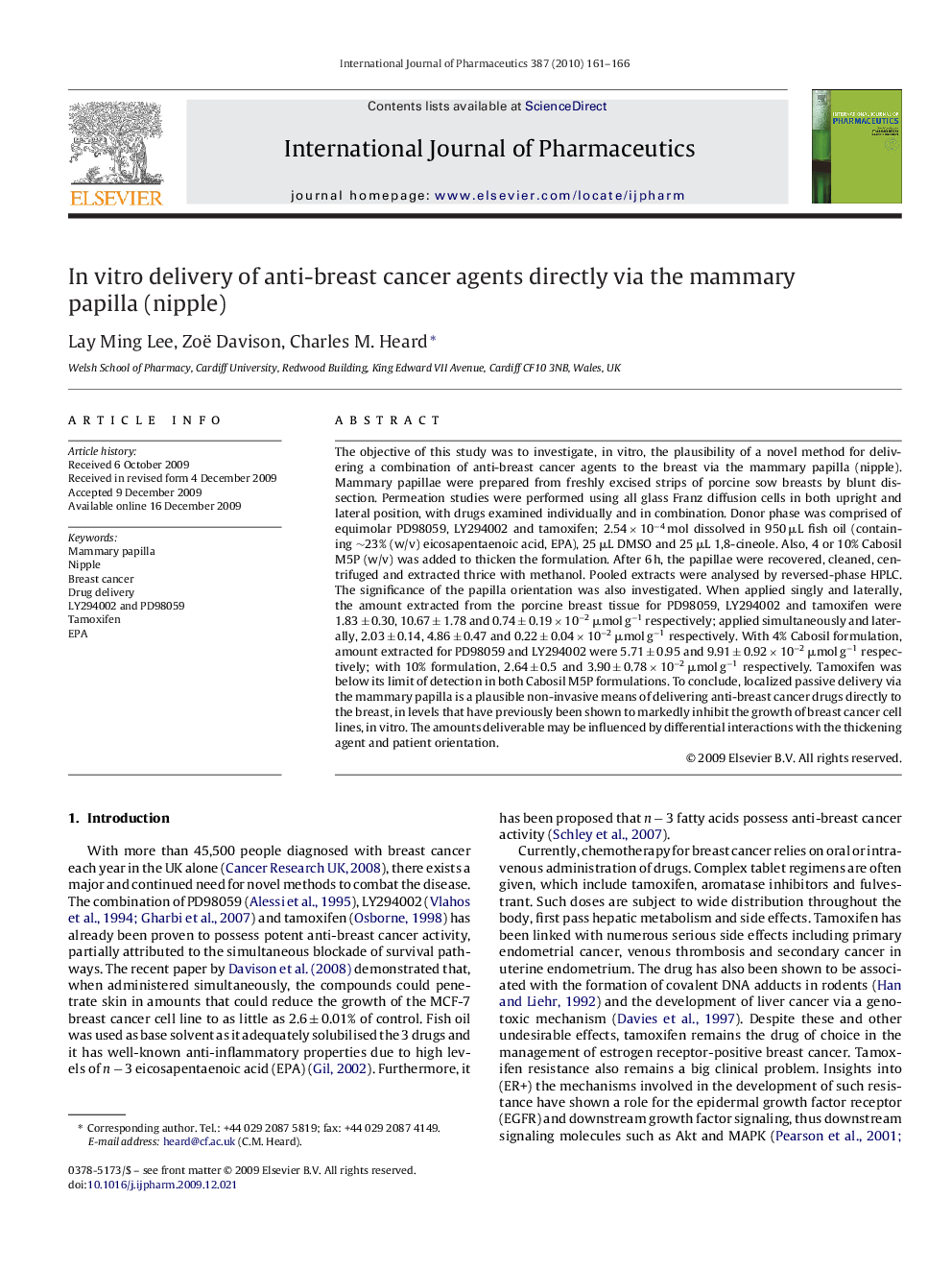| کد مقاله | کد نشریه | سال انتشار | مقاله انگلیسی | نسخه تمام متن |
|---|---|---|---|---|
| 2504289 | 1557456 | 2010 | 6 صفحه PDF | دانلود رایگان |

The objective of this study was to investigate, in vitro, the plausibility of a novel method for delivering a combination of anti-breast cancer agents to the breast via the mammary papilla (nipple). Mammary papillae were prepared from freshly excised strips of porcine sow breasts by blunt dissection. Permeation studies were performed using all glass Franz diffusion cells in both upright and lateral position, with drugs examined individually and in combination. Donor phase was comprised of equimolar PD98059, LY294002 and tamoxifen; 2.54 × 10−4 mol dissolved in 950 μL fish oil (containing ∼23% (w/v) eicosapentaenoic acid, EPA), 25 μL DMSO and 25 μL 1,8-cineole. Also, 4 or 10% Cabosil M5P (w/v) was added to thicken the formulation. After 6 h, the papillae were recovered, cleaned, centrifuged and extracted thrice with methanol. Pooled extracts were analysed by reversed-phase HPLC. The significance of the papilla orientation was also investigated. When applied singly and laterally, the amount extracted from the porcine breast tissue for PD98059, LY294002 and tamoxifen were 1.83 ± 0.30, 10.67 ± 1.78 and 0.74 ± 0.19 × 10−2 μmol g−1 respectively; applied simultaneously and laterally, 2.03 ± 0.14, 4.86 ± 0.47 and 0.22 ± 0.04 × 10−2 μmol g−1 respectively. With 4% Cabosil formulation, amount extracted for PD98059 and LY294002 were 5.71 ± 0.95 and 9.91 ± 0.92 × 10−2 μmol g−1 respectively; with 10% formulation, 2.64 ± 0.5 and 3.90 ± 0.78 × 10−2 μmol g−1 respectively. Tamoxifen was below its limit of detection in both Cabosil M5P formulations. To conclude, localized passive delivery via the mammary papilla is a plausible non-invasive means of delivering anti-breast cancer drugs directly to the breast, in levels that have previously been shown to markedly inhibit the growth of breast cancer cell lines, in vitro. The amounts deliverable may be influenced by differential interactions with the thickening agent and patient orientation.
Journal: International Journal of Pharmaceutics - Volume 387, Issues 1–2, 15 March 2010, Pages 161–166